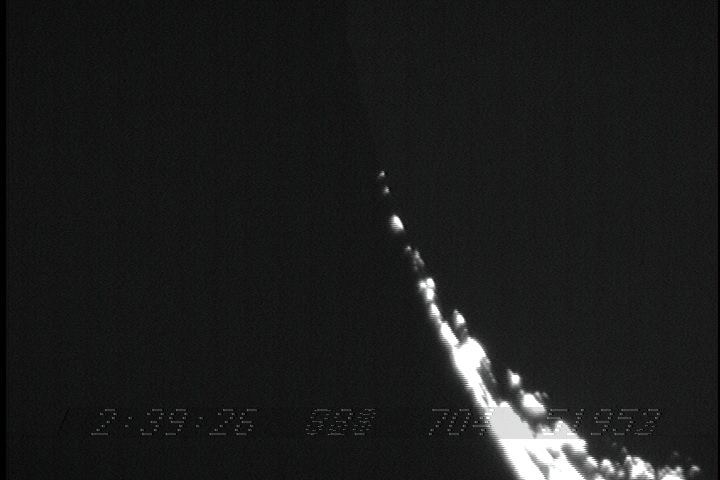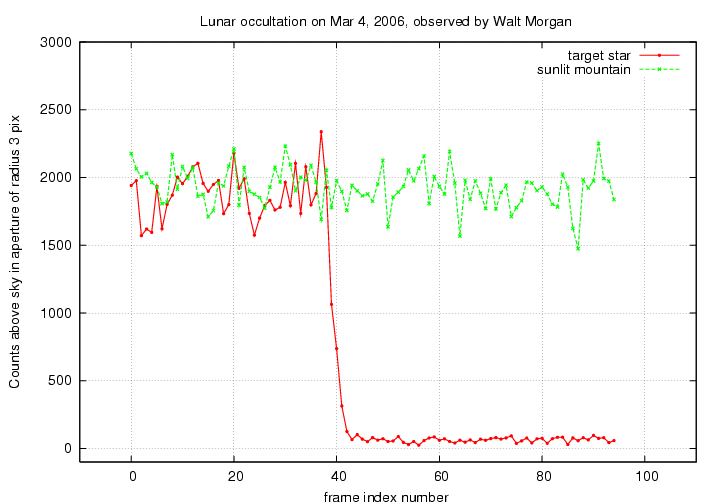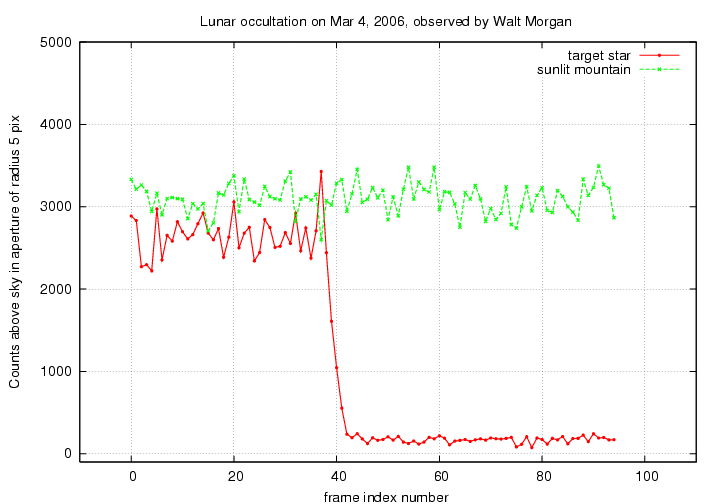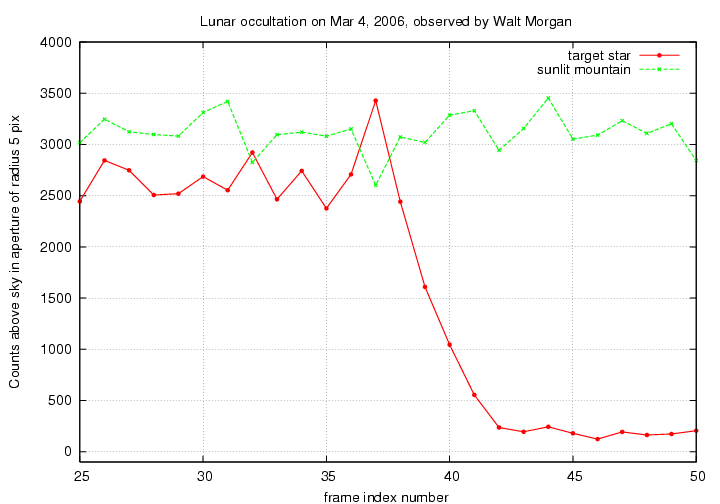
 Copyright © Michael Richmond.
This work is licensed under a Creative Commons License.
Copyright © Michael Richmond.
This work is licensed under a Creative Commons License.
Table of contents:
Walt Morgan observed this event from a location in Northern California. I leave it to him to describe his equipment and location, since he will report on his results fully in the near future. All I'll say is that he used a telescope, video camera, and KiwiOSD time insertion unit.
Walt has reduced and analyzed his video record already, using the excellent LiMovie software. He kindly sent me a brief, 3-second clip of one small portion of the entire graze so that I could analyze the data independently, using my own software. Our goal is to verify that both pieces of software produce the same results.
The video clip provided by Walt covers just over 3 seconds of time, at standard video rate and in NTSC format.
First, I broke the video clip into individual frames using TMPGEnc. The result was a set of 95 JPEG images, each 720 x 480 pixels in size. The typical size of each frame was about 160,000 bytes, which means that there were on average 4 bits per pixel used to represent the original 8-bit data.
Here's a sample frame, the first one in the series. Note that the time of this frame is UT 02:39:26.704, with an uncertainty of plus-or-minus 17 milliseconds.

My images consist of full frames; that is, each image represents 1/30 second of exposure time, with 2 interlacing "fields" added together. Based on the 95 frames and their inserted times, I find an interval of 0.033723 seconds per frame, or a rate of 29.965 frames per second.
In the image above, the topmost point of light along the limb of the Moon is the target star, HD 14688, just before it disappears. The small point of light below it is a sunlit mountain peak along the lunar limb. I will measure the amount of light from both sources -- star and mountain -- for later analysis.
In order to process the data, I
The only star visible in the frames is HD 14688 itself. Some information on the star, taken from SIMBAD
HD 14688 = HIP 11075 = GSC 1215-0971
B=6.93 V=6.97 spectral type A2V
spectroscopic binary with period 4.32 days
RA = 02:22:33.20 Dec = +16:52:13.0
The FITS images showed that the peak pixel values in both the star and the nearby mountain were around 150-220 counts. Neither had many pixels at the maximum value of 255 counts. Other sunlit areas on the lunar limb, however, did saturate at this value. The FWHM of the star was around 5 pixels.
For each of the 95 frames, I
Here are quick views of the results.
The entire light curve, using an aperture radius of 3 pixels:

The entire light curve, using an aperture radius of 4 pixels:

The entire light curve, using an aperture radius of 5 pixels:

A closeup around the time of disappearance, using aperture of radius 5 pixels.

You can grab the data in a multi-column ASCII text file below. The columns are
col quantity
------------------------------
1 frame index
2,3 flux of star in 3-pixel-radius aperture,
and estimate of uncertainty in that flux
4,5 ditto 4-pixel aperture
6,7 ditto 5-pixel aperture
8,9 flux of mountain in 3-pixel-radius aperture,
and estimate of uncertainty in that flux
10,11 ditto 4-pixel aperture
12,13 ditto 5-pixel aperture
 Copyright © Michael Richmond.
This work is licensed under a Creative Commons License.
Copyright © Michael Richmond.
This work is licensed under a Creative Commons License.